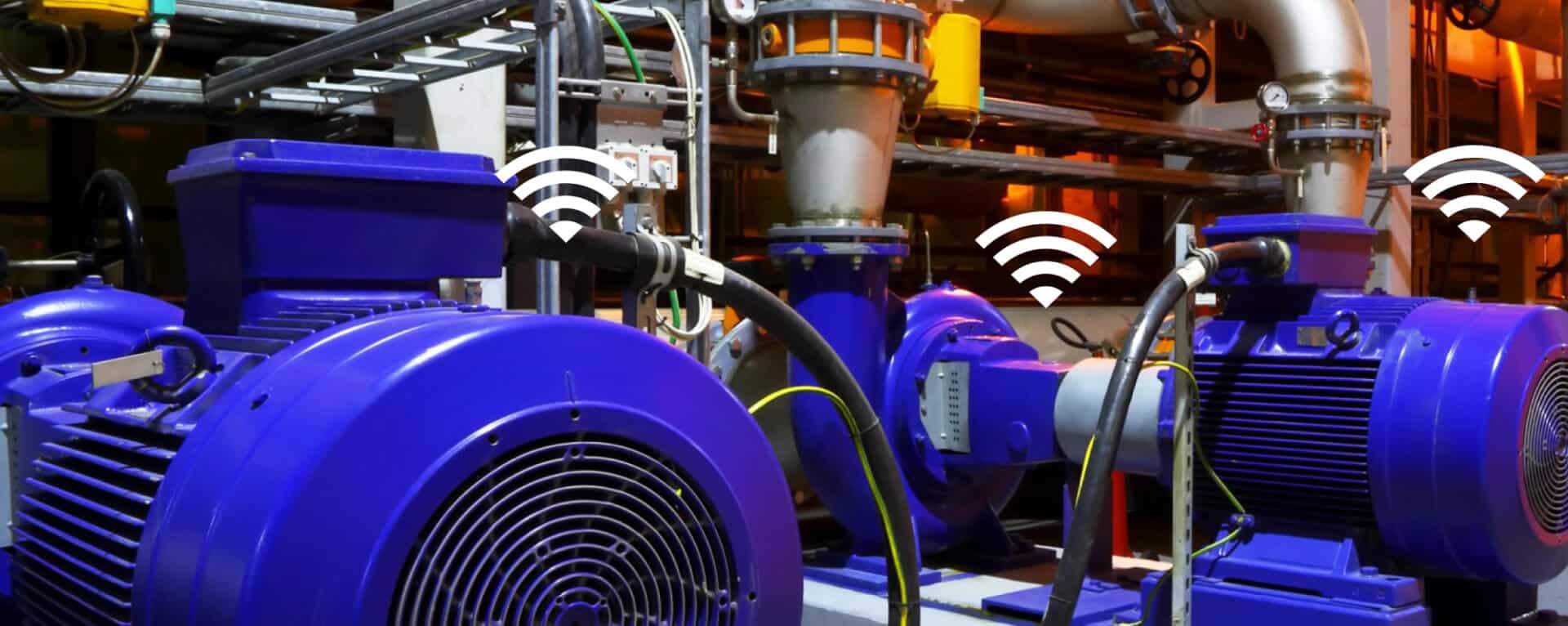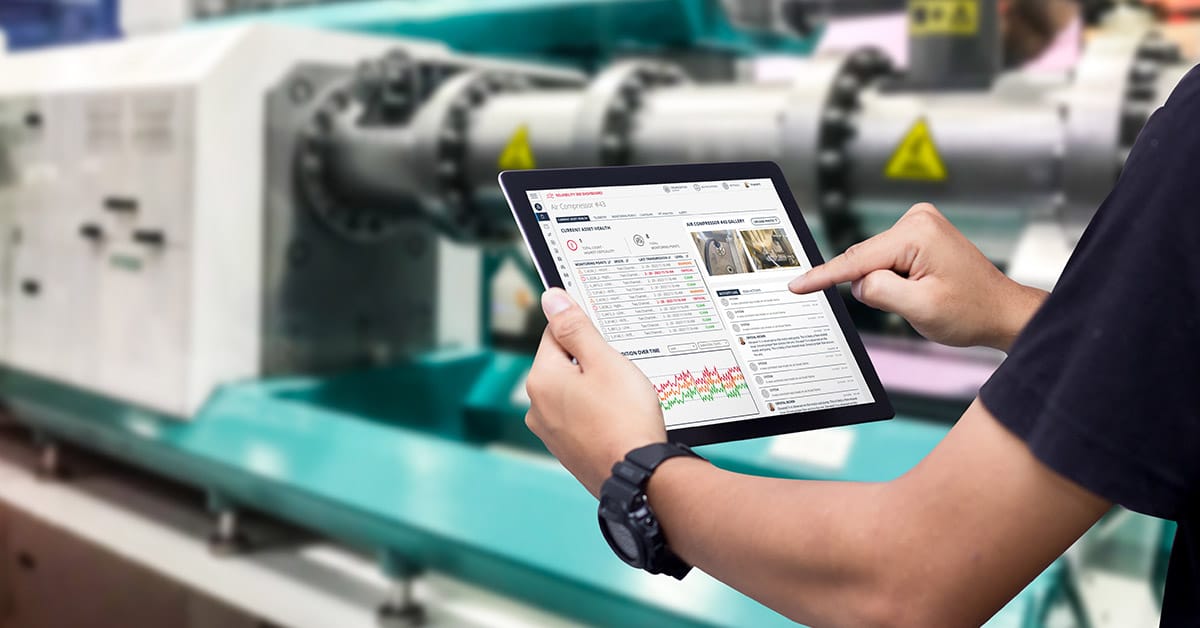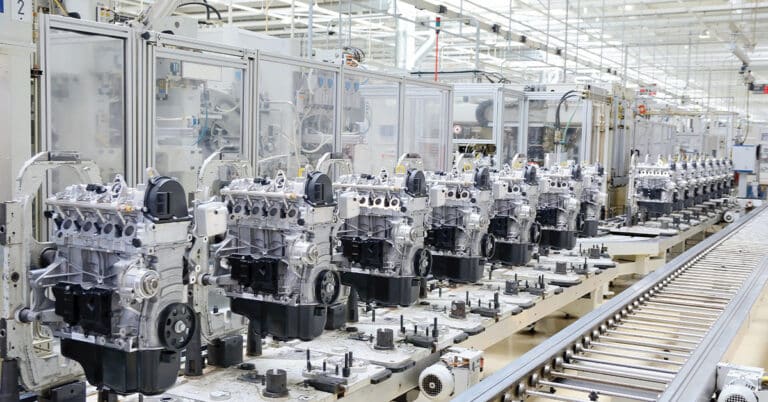All too often, maintenance action is based on one of two factors: a rigid schedule or equipment failure. Under these plans, maintenance often occurs too early (i.e., the preventive, scheduled replacement of a component, even if it is still in good working order) or too late (i.e., the aforementioned equipment failure). Each of these approaches leads to waste:
- In a purely preventive approach, resources and parts are consumed whether or not they are needed
- In a purely reactive approach, costly downtime and extensive repairs are necessary

The solution — a way to reduce these wasteful efforts — is condition-based monitoring, a maintenance approach based on monitoring and reacting to the performance state of equipment, with the goal of remedying possible failures well before they lead to equipment shutdowns. Condition-based maintenance is facilitated by ongoing, real-time monitoring of key performance metrics, such as vibration, and temperature; as well as by connectivity and communication that allows for data collection and performance alerts to drive maintenance action.
A condition-based maintenance system will include industrial sensors, network communication infrastructure, data collection and analysis software, computerized maintenance management systems (CMMS), and more — all based on IIoT (Industrial Internet of Things) principles and technology.
How do manufacturers benefit from condition monitoring?
Implementing a condition monitoring-based plan can benefit manufacturers in numerous ways:
- Reduction or prevention of asset failures: Condition monitoring maintenance is specifically designed to detect the beginnings of potential equipment problems, well before they become production problems as a result of asset failure. By reducing or eliminating purely reactive maintenance and run-to-failure tactics, equipment is optimized and operational much more of the time.
- Increased uptime: By implementing a condition monitoring maintenance plan, planned downtime can be planned more strategically and effectively to maximize production efficiency.
- More productive, efficient maintenance: Unlike preventive maintenance, condition-focused maintenance uses technology to detect the underpinnings of actual equipment problems, meaning that maintenance occurs only when needed. This improves maintenance resource allocation and efficiency.
- Increased insight into asset health and performance: Data is the backbone of condition monitoring, comparing benchmarks and historical performance data against real-time performance to provide alerts when aberrations occur. As more data is collected and analyzed, you gain more information about equipment performance — and how you can improve it.
- More accuracy in MRO: Data from condition-based maintenance software also allows for increased accuracy and effectiveness in inventory practices including MRO ordering and management.
How does condition-based maintenance work?
Condition monitoring uses connected industrial sensors to continually monitor performance aspects that are known to be failure-mode indicators.
The list of potential areas to monitor is extensive, but some of the most common are listed below:
- Vibration monitoring: Vibration monitoring can be used on any rotating part and is an effective indicator of potential equipment malfunctions or maintenance issues. Sensors are able to detect even slight fluctuations in vibration levels that may indicate part wear, improper calibration, damage or other issues — which can then be investigated and remedied.
- Temperature monitoring: Most equipment operates at a consistent temperature. Temperatures that are higher than normal can indicate increased friction in moving parts, which can lead to premature wear and equipment failure. By sounding an alert if the temperature rises outside an acceptable range, these failures are now preventable.
- Ultrasonic monitoring: Sound is an excellent indicator of equipment performance. Ultrasonic monitoring takes sound detection to the next level. By using sensors that can detect high-frequency sounds that cannot be heard by the human ear, leaks and holes in equipment such as hoses and tanks can be zeroed in on right away.
- Pressure monitoring: Pressure monitoring provides a constant, real-time assessment of fluid and air pressure in hoses, tanks, compressors and other key equipment. It offers real-time access and the ability to sound an alert at even the slightest pressure drop.
- Thermographic testing: Thermographic testing uses infrared sensors to measure the amount of heat emitted from electrical components. As these components begin to wear, electrical resistance will start to increase, which in turn leads to an increased amount of heat generated at these wear points. Thermographic testing allows these signs of wear to be detected and addressed early.
- Oil Analysis: Oil analysis uses sensors to gauge the composition and wear of engine oil, detecting issues that could lead to improper lubrication and damage to engine components. In oil analysis, sensors can monitor the pH level of oil, as well as the presence of excessive water, coolant and other unwanted materials. With these sensors, personnel can have a definitive indication of when oil should be changed.
What are condition monitoring sensors?
Machine condition monitoring sensors track primary machine maintenance indicators, such as the state of vibration, temperature and motor functions — detecting the earliest beginnings of the failure-mode indicators mentioned above. Industrial sensors constantly track machine health — around the clock, 24/7/365 — and provide real-time data and alerting, enabling a higher degree of certainty in predictive maintenance. The connected nature of sensors enables remote monitoring from anywhere, allowing facilities to manage their machine assets from any location.
Condition monitoring of machines from ATS
As part of our predictive maintenance services, ATS uses the latest machine health monitoring technology to keep maintenance and operations teams updated in real-time about asset health and potential failures through our cloud-based analytics platform and reliability engineer expert support. Our technology-driven approach to maintenance helps you eliminate unplanned downtime and reduce costs. Contact us today to learn more about our condition monitoring process.


